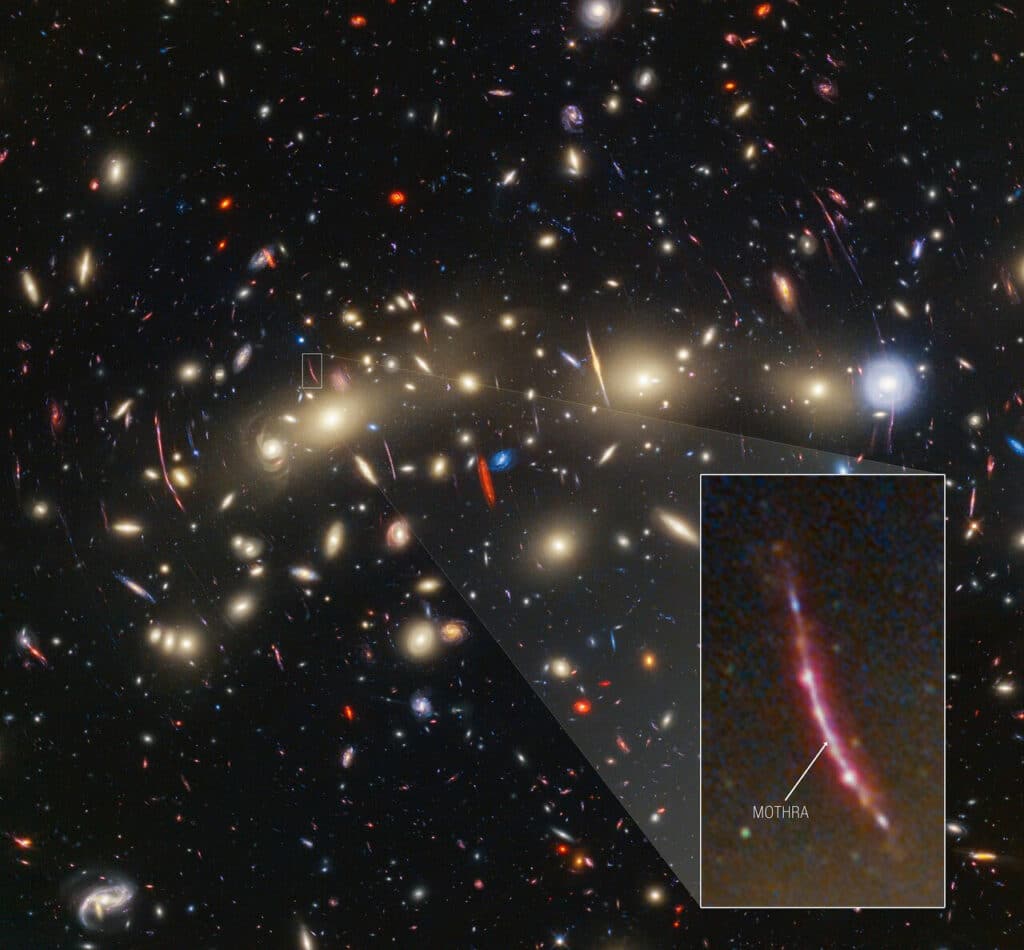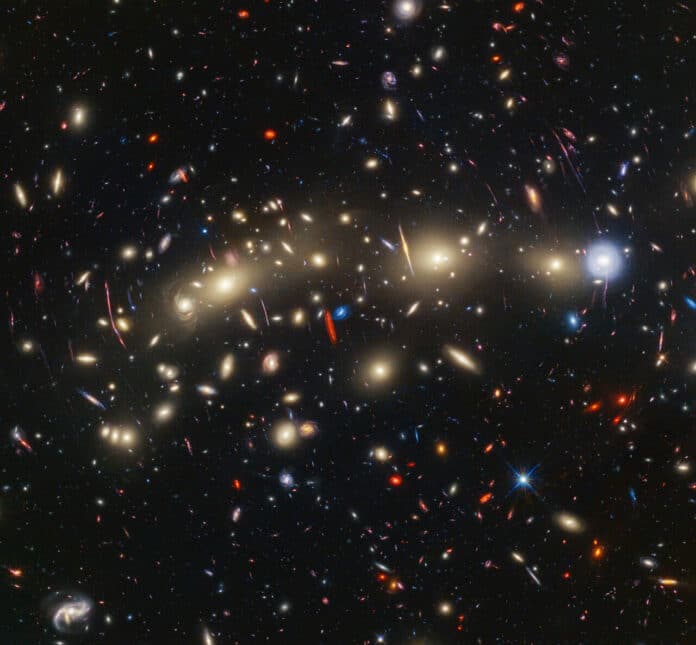The NASA/ESA/CSA James Webb Space Telescope and the NASA/ESA Hubble Space Telescope combine to study the massive galaxy cluster known as MACS0416. MACS0416 is a pair of colliding galaxy clusters that will eventually merge to produce an even larger cluster. It is situated approximately 4.3 billion light-years from Earth.
The image shows many features that are only achievable by combining the capabilities of both space telescopes. It has an abundance of galaxies beyond the cluster and a scattering of sources that change with time, probably due to gravitational lensing.
The longest wavelengths of light are colored red, the intermediate wavelengths are colored green, and the shortest wavelengths are colored blue to create the image. The wide range of wavelengths (0.4 to 5 microns) produces an especially colorful galaxy panorama.
The bluest galaxies are typically closer together and exhibit more active star formation; Hubble best identifies these galaxies, whereas the redder galaxies are generally farther away and best spotted by Webb. These colors indicated the distances between galaxies. Because they contain a lot of cosmic dust, which tends to absorb bluer colors of starlight, certain galaxies also appear incredibly red.
The new Webb observations were taken for a specific scientific purpose. The research team combined their observations from different times to search for objects that vary in brightness over time, known as transients.
In their observations, the researchers discovered 14 transients. Twelve of them are probably individual stars or multiple star systems, and they are found in three gravitationally lensed galaxies that are greatly magnified. The other two transients are supernovae because they were discovered in magnified background galaxies.
Finding so many transients suggests that astronomers could discover many more transients in this cluster and others like it through regular monitoring with Webb.

One particular transient was an odd man out: it is located in a galaxy about 3 billion years after the Big Bang and magnified by a factor of at least 4000. This star system has been named Mothra in a nod to its ‘monster nature’. It joins another lensed star that the researchers previously identified and that they nicknamed Godzilla.
Journal References:
- Haojing Yan, Zhiyuan Ma, Bangzheng Sun et al. JWST’s PEARLS: Transients in the MACS J0416.1-2403 Field. The Astrophysical Journal. DOI: 10.48550/arXiv.2307.07579
- Jose M. Diego, Bangzheng Sun, Haojing Yan et al. JWST’s PEARLS: Mothra, a new kaiju star at z = 2.091 extremely magnified by MACS0416, and implications for dark matter models. Astronomy & Astrophysics. DOI: 10.1051/0004-6361/202347556
